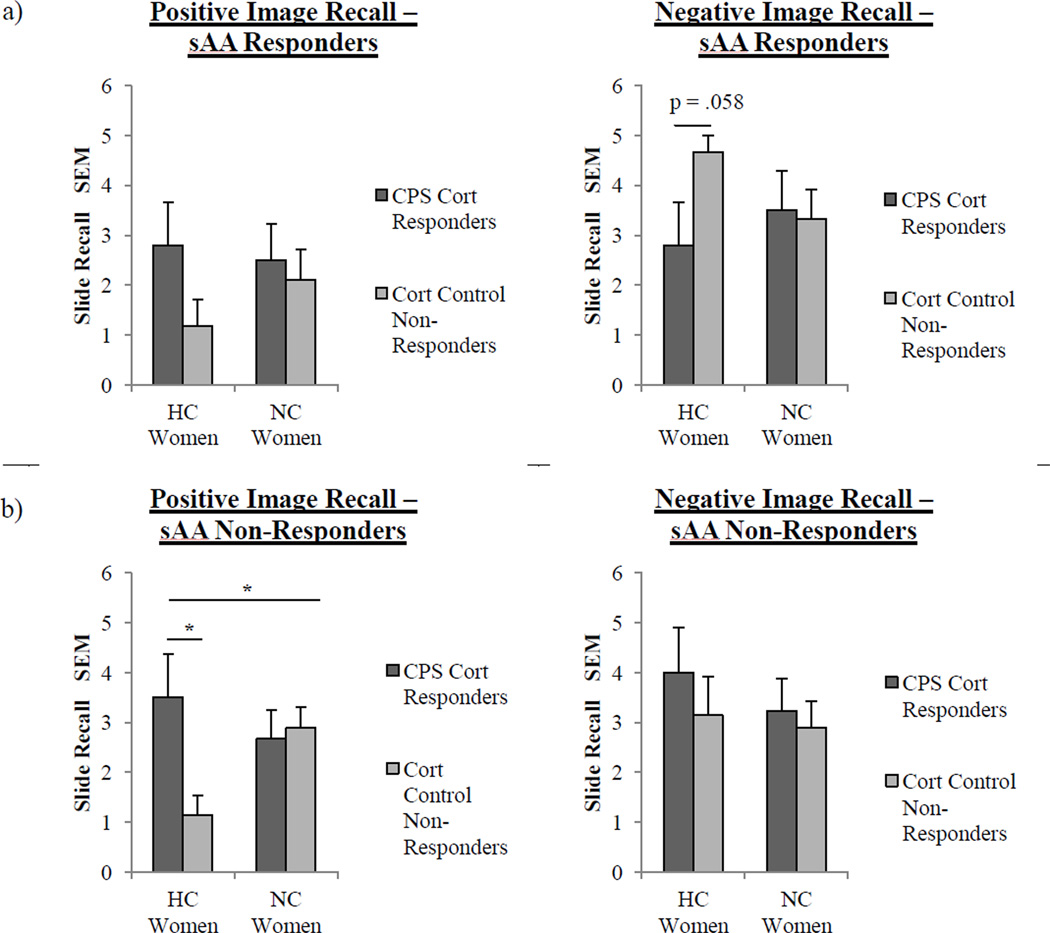Fig. 7.
Recall performance for neutral, positively, and negatively valenced images in sAA Responders and sAA Non-Responders. a, sAA Responders: There were no significant effects or interactions between cortisol response and contraceptive use on memory for positively valenced images. However, for negatively valenced image recall, two way-ANOVA revealed a trend toward an overall significant interaction between cortisol response (CPS Cortisol Responder v. Cortisol Control Non-Responder) and contraceptive status (p = .08). Also, HC women that were Cortisol Control Non-Responders (n = 6) recalled near significantly the most negatively valenced images compared to HC women that were CPS Cortisol Responders (n = 5; p = .058, one-way ANOVA). Values ± s.e.m. b, sAA Non-Responders: There were no significant effects or interactions between cortisol response and contraceptive use for negatively valenced images. However, for positively valenced image recall, a two way-ANOVA revealed an overall significant interaction between cortisol response (CPS Cortisol Responder v. Cortisol Control Non-Responder) and contraceptive status (one asterisk, p < .05). Also, HC women that were CPS Cortisol Responders (n = 4) recalled significantly more positively valenced images compared to HC women that were Cortisol Control Non-Responders (n = 7; one asterisk, p < .05, one-way ANOVA). Values are means ± s.e.m.

